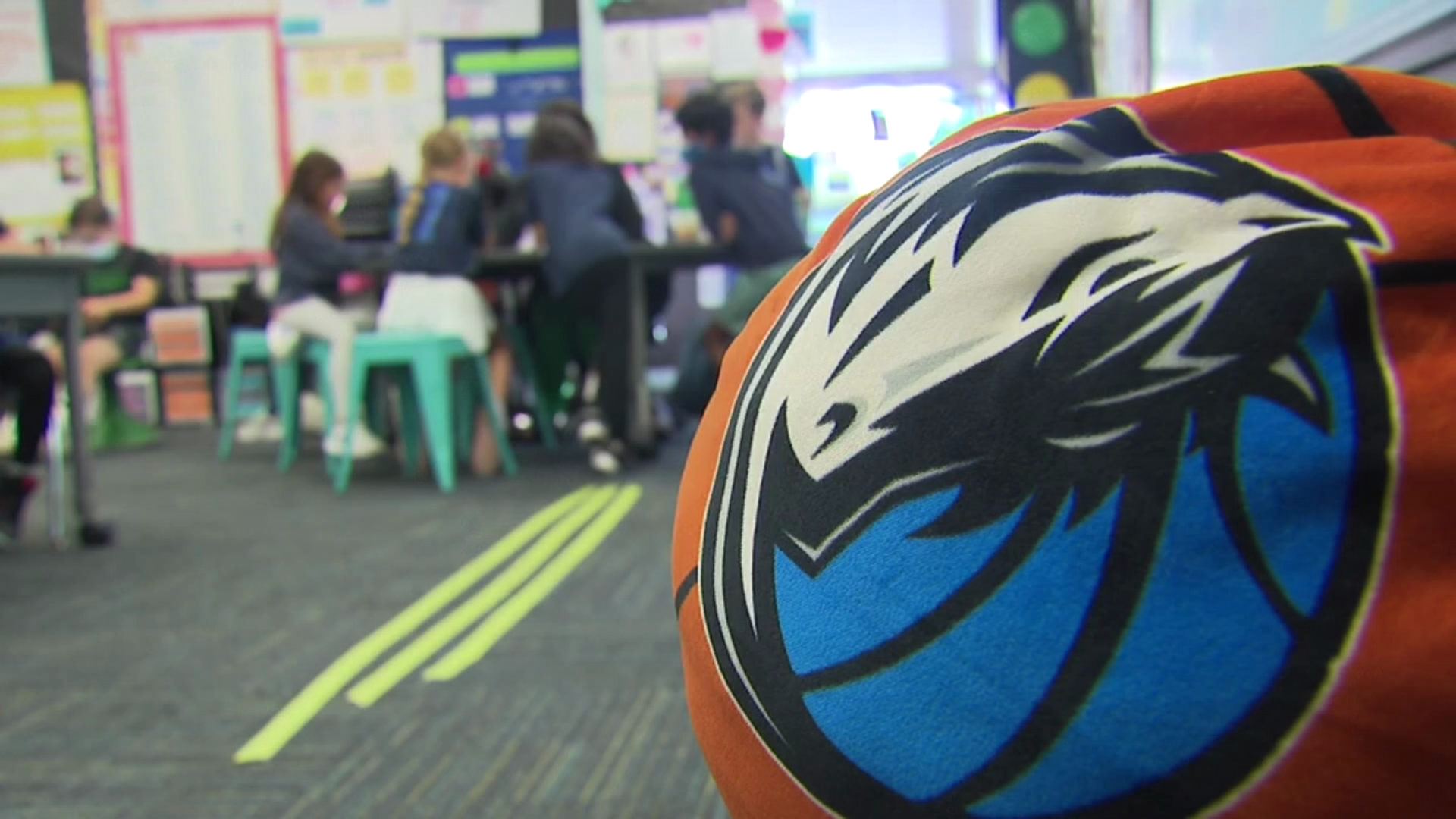The local celebrities arrived at the Mason Mountain Wildlife Management Area the night before, nestled in a cluster of plastic tubs secured in the back of Vicky Poole's SUV.
The Austin American-Statesman reports she'd driven the Texas horned lizard hatchlings the four hours from the Fort Worth Zoo, where she helped breed them in captivity in her role as assistant curator of ectotherms. She checked on them at every stop.
On a recent cool morning at the wildlife management area, Poole and biologists from the Texas Parks & Wildlife Department prepared the unknowing hatchlings for their release -- the latest effort in a multiyear project to boost the population of the threatened species. Habitat loss and food shortages have decimated the reptile population for decades, and they've effectively disappeared from the eastern third of the state.
Poole and the biologists sat around a table and fitted 20 of the 37 hatchlings with radio transmitters -- flimsy, filmstrip-like devices that stuck to the lizards' brown speckled backs. From a distance, it looked as if the team was sorting coins or candy -- and not the iconic reptiles that have burrowed themselves into a particularly beloved nook of Texas lore.
Get DFW local news, weather forecasts and entertainment stories to your inbox. Sign up for NBC DFW newsletters.
They're like "little warm jelly beans," Poole said of the hatchlings. Ranging in age from just a week to a month old, the hatchlings won't grow the prominent horns that earn them their name until next spring.
The Texas horned lizard is the state's official reptile, the star of a daylong festival in the West Texas city of Eastland, and the stuff of urban legend. They're so embedded in childhood memories that people across swaths of the state have stories aplenty to share about their favorite "horny toad."
For the next few weeks, the biologists will track and monitor the hatchlings until the transmitters fall off. It's the latest phase in the project -- one that focuses on learning more about how the young lizards fare in the wild.
Local
The latest news from around North Texas.
"We don't know a lot about how the little guys live their life," said Nathan Rains, one of the biologists assisting with the release.
In previous years, biologists experimented with taking adult horned lizards from the wild and releasing them onto private property, as well as relocating them from West Texas to Central Texas. But working with the adults -- which can grow to between about 3 1/2 and 5 inches in length -- proved both difficult and slow to yield results, so recent efforts have shifted to focus largely on the breeding and release of hatchlings.
"We can produce a whole lot more in captivity versus catching adults in the wild, which is really time consuming," Rains said.
The project still is largely in the research phase. The biologists haven't been able to identify proven techniques to restore the population long-term.
"We just take our best guess and do something and hope it works," Rains said.
Scientists don't know how much the species has declined -- but they do know that the reptile's range has continued to shrink since 1977, when it was first listed as threatened in Texas. The lizards also have had a rough go of it outside of Texas, including in parts of eastern and central Oklahoma.
Loved as they are, Rains said they're "high-maintenance creatures." As far as their diets go, they can only stomach native harvester ants, which in recent years have been on the decline because of invasive fire ants. The lizards have serious mobility issues -- their flat bodies and short legs make it difficult to flee quickly from predators -- keeping their annual mortality rate at about 60% to 90% a year, according to Rains.
But part of their decline is blamed on humans and urbanization. The lizards thrive in open areas with sparse plant cover. When those habitats are converted to cropland, pastures, roads or housing, populations of the lizard can become isolated, making breeding difficult.
"There's not one single element," Rains said. "It's all that together."
The challenge, according to Jim Gallagher, a biologist at the wildlife management area, is proving that it's possible to regrow their populations. If it works at the wildlife management area, he said, it's possible the effort could be duplicated in other parts of the state.
"We need to fill those gaps," Gallagher said.
Several of the biologists are hopeful that a bill introduced in Congress earlier this year, known as the Recovering America's Wildlife Act, could provide funding that would allow them to scale up lizard conservation efforts.
The bill, which has 125 Democratic and Republican co-sponsors, would provide $1.3 billion annually to state initiatives supporting at-risk fish and wildlife populations and their habitats. And Texas is home to more than 1,300 of the 12,000 species identified nationwide as having the greatest conservation need -- including the Texas horned lizard. If the bill passed, the state would get about $50 million per year for projects like this one.
"It's just a simple translation that you can do more with more money," Rains said.
Janice Bezanson, executive director of the Texas Conservation Alliance, said the bill would be a game changer.
"There are so many on-the-ground projects that we need to be doing but there isn't adequate funding for," Bezanson said. "At a time when we have rolled back some of our environmental protections it is particularly important to have an initiative that has broad based support from both parties."
Back at the wildlife management area, two hours northwest of Austin, in an open patch of grass by a nearby harvester ant pile, Poole and Gallagher kneeled on the ground, clutching the plastic tubs with the hatchlings inside. They placed the lizards on the ground one by one, and watched as some hatchlings scuttled away while others burrowed into the ground.
After a few minutes, they were gone -- swallowed up by the low, wispy grass. Poole and the biologists stood nearby, quietly rooting for their survival.



